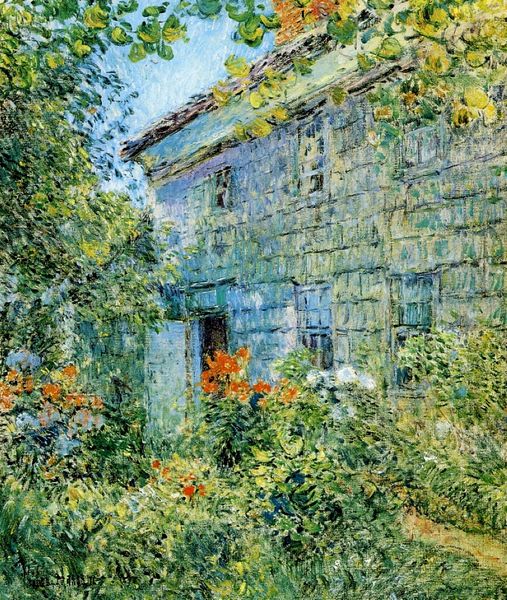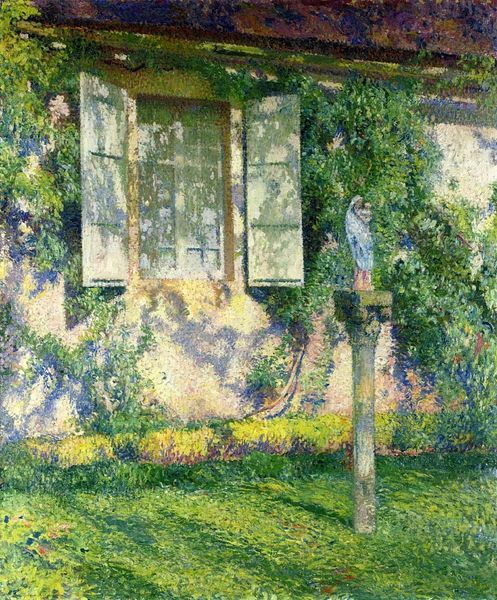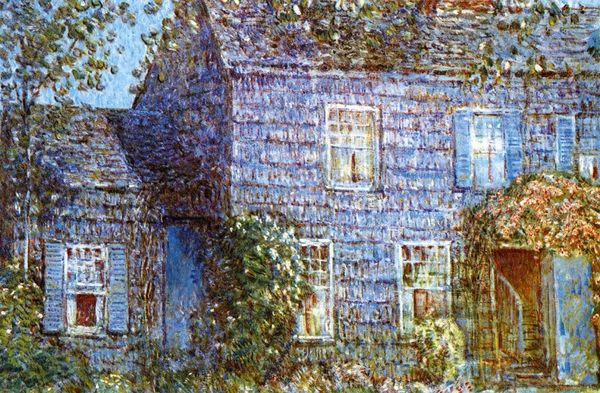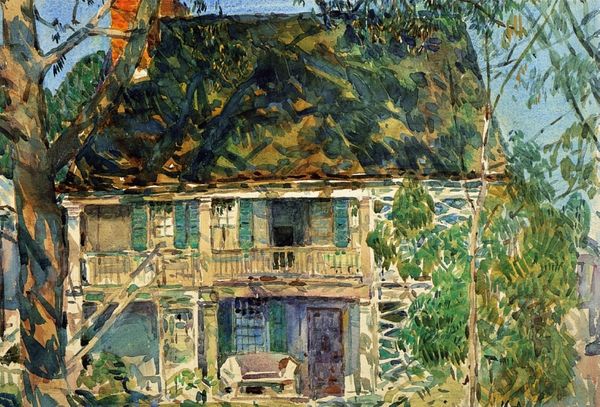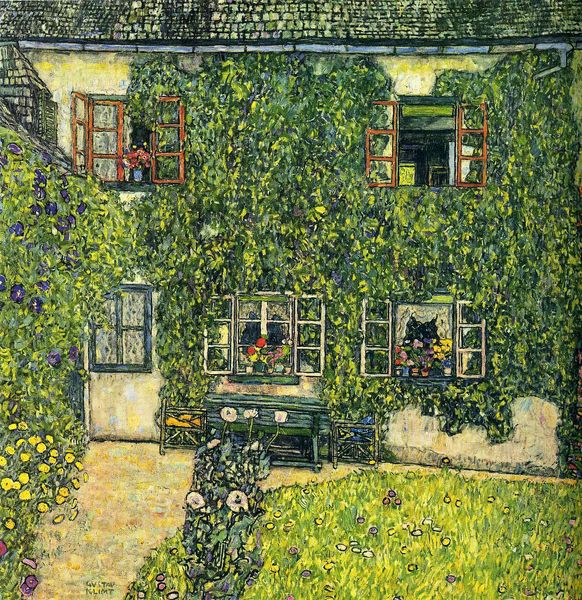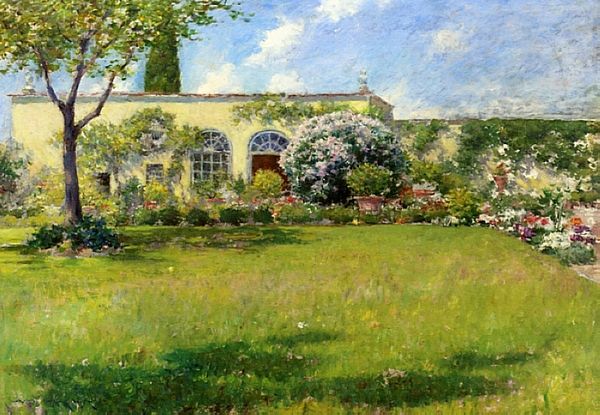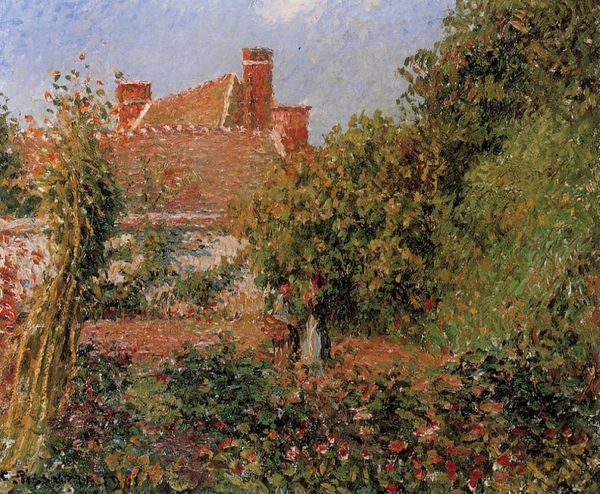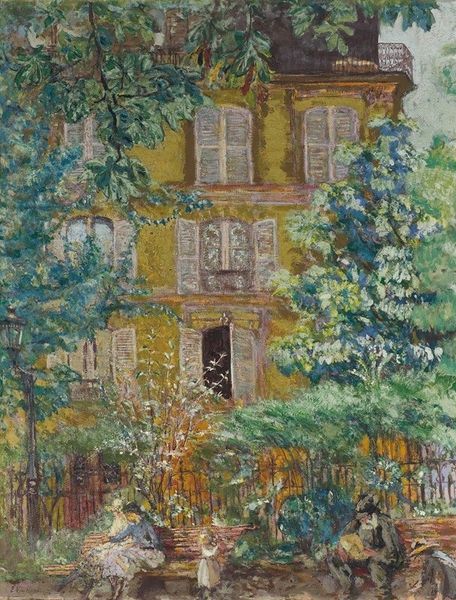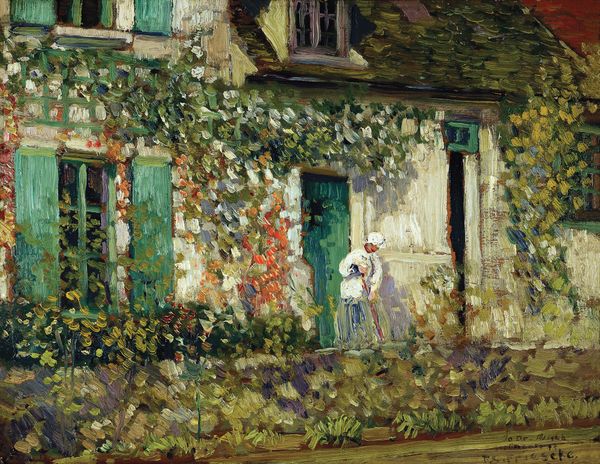
Copyright: Public domain
Curator: Childe Hassam created "Home Sweet Home Cottage, East Hampton" in 1916. What strikes you when you first see it? Editor: It feels swallowed up, in a strangely comforting way. The cottage seems almost entirely consumed by lush greenery. A sweet prison? Curator: Hassam was working "en plein air" at this time, embracing that Impressionistic style to capture the immediacy of the natural world. This house practically breathes, doesn't it? It's material is just as much foliage as brick. Editor: Absolutely. Look how the strokes of oil paint mimic the dense texture of leaves. It’s a hazy summer day made solid. Almost feels like a childhood memory, blurry edges and all. The materiality is secondary to the dreamy depiction. Curator: Considering Hassam's historical moment, we're on the brink of World War I. He was actively involved in propaganda efforts. Editor: It's easy to forget any context when the atmosphere is so enchanting, a refuge that would distract someone from global turmoil. What are your thoughts about this particular house being a symbolic structure of the era? Curator: Fascinating. I see "Home Sweet Home" less as shelter and more as commodity. Think about the cottage as a structure, material in its creation. Also consider its place in representing the upper middle class of this era. It represents stability and material success. Editor: Yes, perhaps its being overtaken by nature is not a sweet absorption but an omen—a future where man-made things return to the earth, or are radically changed by it. Maybe I read too much poetry. Curator: Or just enough! What I take away most strongly from studying it are the dual elements: shelter, material success, labor and land. This pushes one to re-examine what we have inherited and what might come next. Editor: True. Its emotional allure has layers. It definitely isn’t just “pretty”. Thanks for helping me see all the elements here.
Comments
No comments
Be the first to comment and join the conversation on the ultimate creative platform.
